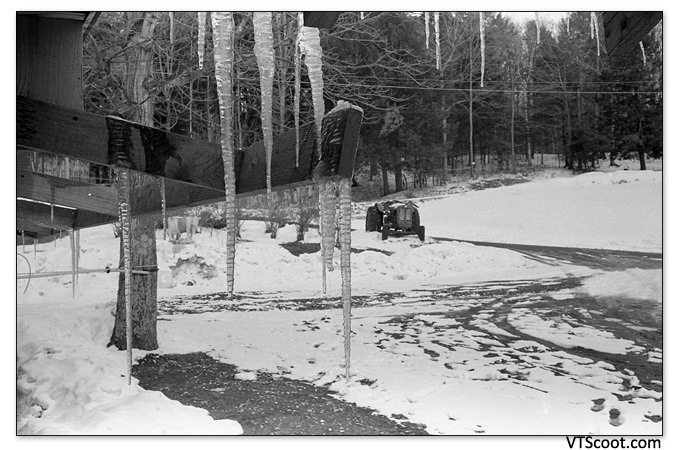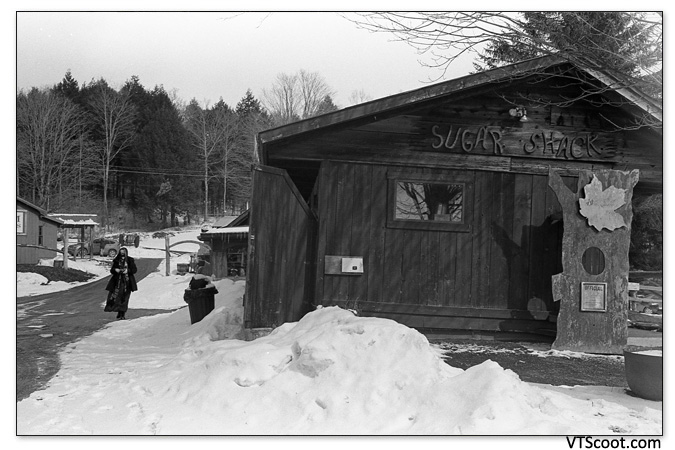Konica Auto S3
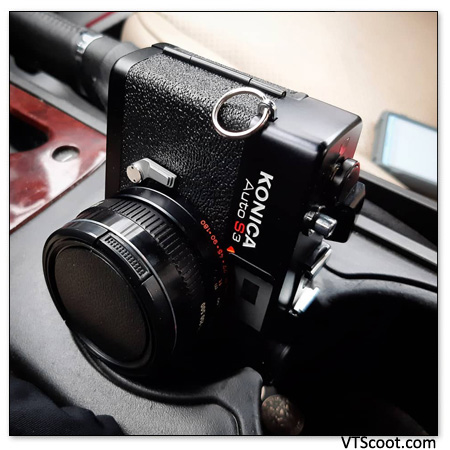
I was reading reviews of various cameras during my down time at work, and because somehow I’ve confused the term “Camera Review” with “Shopping List,” I decided it would be a good idea to have a super compact camera to stick in my bag and forget about.
I am often finding myself in situations where I wish I had a camera with me to catch a certain scene I didn’t expect (good rule of thumb, always expect a certain scene), but I frequently don’t have one. They take up space in a bag that I try to keep as un-bulky as I can when heading to work and back, and when I do put one in there, it’s usually for the day, maybe two, and when nothing happens to justify bringing it out I put it back on the shelf. A smaller camera that lives in my bag might be a good idea. I have a Canonet rangefinder that’s pretty nice, though the metering is not always very good and I need to bring it in for a tune-up, because all the adjustment rings are super stiff. I’ve used it twice and am not sure how I feel about it yet, so maybe if I can find something small for under a hundred bucks I can designate it as the “put it in the bag and forget about it” camera.
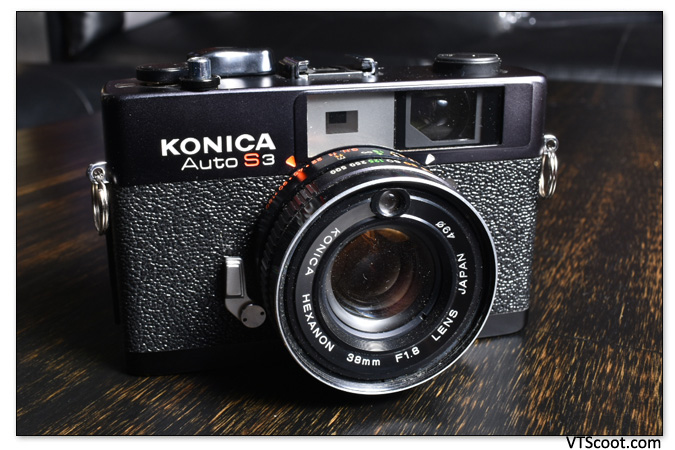
That sounds like an excuse to buy another camera, and it probably is. I will give myself reasons to buy yet another camera. Especially if it’s under a hundred bucks. I can always sell it for the same amount I got it for (or more in some cases) if I’m not in love with it. People collect what they like to collect, just about every friend has a collection of things they don’t need yet spend hundreds of bucks on. This is mine.
So I happened upon a Konica Auto S3 in perfect condition, save for some foam light seals that needed replacing. Cheapest and easiest fix in an old camera, if you can spool a roll of 35mm in the dark, you can replace light seals. I think I spent 75 bucks on it.
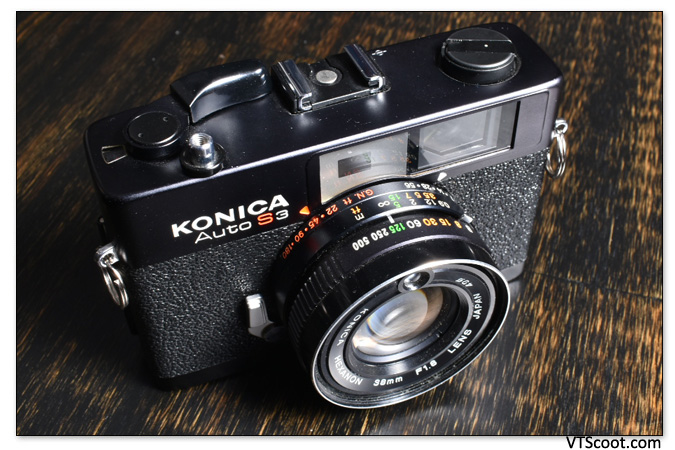
$75 is a steal, really, for a camera in this condition. Normally you see them for 200 and up. This is the import model, mind you, there is one made for the Japanese domestic market called the Konica C35 FD that is the exact same camera, save for a little bit of chrome on the body, yet it sells for less money because more people want the Auto S3 for some reason. If it costs more because more people want it, then naturally that is the model I need to buy as well because I am the very worst sort of consumer.
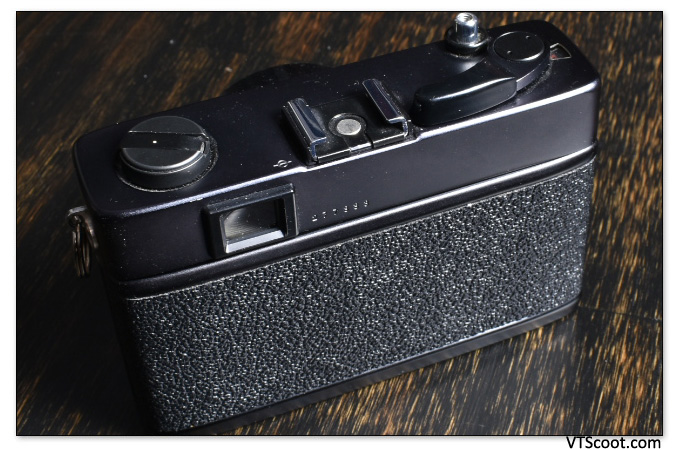
The Konica Auto S3 is a super compact, shutter-priority camera made between 1973 and 1977. The body is built from aluminum, which makes it a little bit lighter but it will dent if you drop it too hard… so don’t drop it. It has a very fast, very sharp 6-element f/1.8 38mm lens. A lot is made of the quality of the lens, one of the best rangefinder lenses of this time period, so I’ve read, but I feel like I hear that a lot about many cameras. Whether it’s among the best or not doesn’t matter, it’s a good lens regardless.
I’m more of an SLR guy than a rangefinder guy, and am more of an aperture-priority shooter than shutter-priority (meaning, you set the shutter speed and the camera automatically sets the aperture to accommodate), so I have to get used to this action. The Konica Auto S3 has no manual mode, it only shoots in shutter-priority.
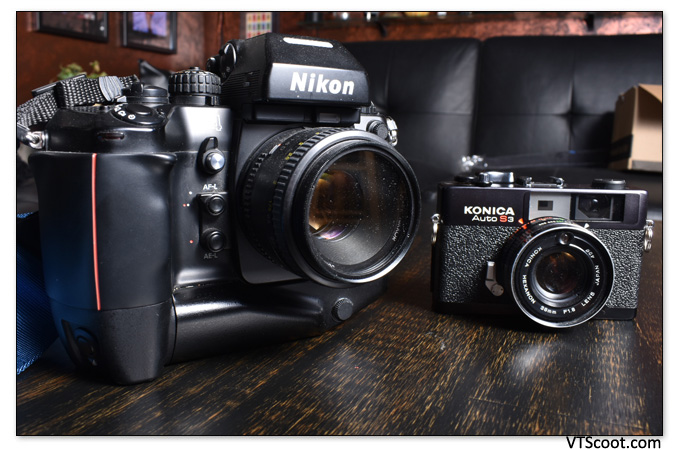
I take the camera out to a maple sugaring operation just outside of Montpelier, VT to see what I can do with it. The first issue I have with it is the film seemed a little difficult to get wound onto the take-up spool, it seemed to slip out easier than I expected and I had to try again. Then when I finished the roll it just kept advancing, even after I’d run out of film, so as a result I missed out on several exposures I shot at the end of the roll thinking I still had more film. I’m not sure if this will be a regular problem or if this was just a fluke error in loading this one roll. I have yet to try a second roll, so I don’t know if the camera needs fixing. Let’s see what the pictures look like.
Not too bad. I wasn’t able to focus right for several of the shots, my viewfinder kept fogging a bit because, you know, Covid masks do that sort of thing, but enough images were focused well enough to assume there was no issue with the functionality of the rangefinder focusing system. Rangefinders focus differently than SLRs so I don’t always have an easy time getting the focus right. Also, light conditions were quite cloudy, so images were not as sharp as they could have been, but they were still pretty good. I took a mirror selfie at the beginning of the roll that is a good indicator of what sort of quality I can expect. These shots were on a roll of Kodak Tri-X 400, which is a bit of a grainier film, I’d be curious to see what I can do on a roll of Ilford Delta 100.
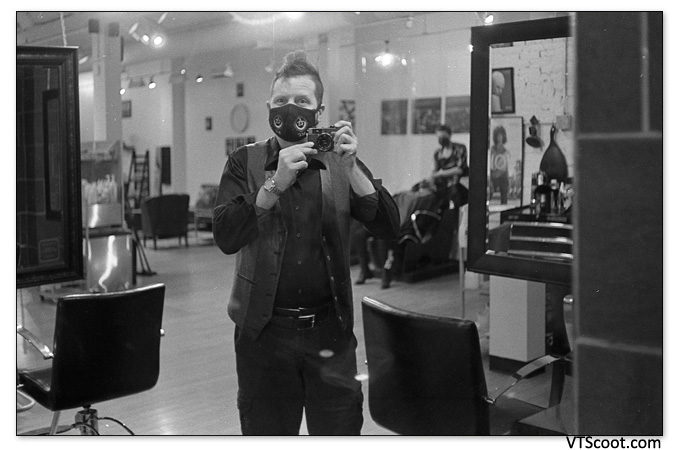
As you can imagine, it isn’t always easy to review a 45-year-old camera on its merits, because it isn’t always going to perform under its optimal abilities as the machine is rather elderly. I’ll know more after a second roll whether or not the film transport (meaning, the system that advances the film frame by frame) needs repair, though if the only problem is that it won’t stop advancing at the end of the roll I might not spend the money, opting instead to keep a better eye on the frame counter. All the individual frames are equally spaced and not overlapping, so it’s still doing it’s job. The pictures look pretty good. The cloudy-winter-light-at-the-end-of-the-day conditions won’t yield the best results even in a camera’s prime. I’m not in love with the focusing, I found I had to look around at other things to be able to see the two images join together (which is how you focus a rangefinder). Again, this is not the camera’s fault.
Now, as to the general purpose of this camera, it meets my expectations. It is very light, and it is really, really small. My smallest camera to date. It’s smaller than even my Canonet, which is a very compact camera to begin with. It’s durable enough that I can put it in the front pocket of my work bag and I won’t worry about it getting damaged. It’s an attractive camera, too. That’s important to me, I won’t deny it. Just like a car… any car will get you to work and back, but you’re going to be more drawn to a car with the color you like and in a style that’s pleasing to your eye. It’s held up incredibly well for the 40+ years it’s been alive, so the build quality is there. I can see why people will spend 200 bucks on a camera nearly half a century old.
By the mid 70’s there weren’t a lot of rangefinders being made. Rangefinders were the older technology, SLRs were now the dominant camera technology, so the rangefinders built after 1970 would likely tend toward a higher level of quality if a company expects to have a market for it. I’m an SLR guy, I don’t see that I’ll have a desire to own very many rangefinders at all, but I plan to keep this one.


